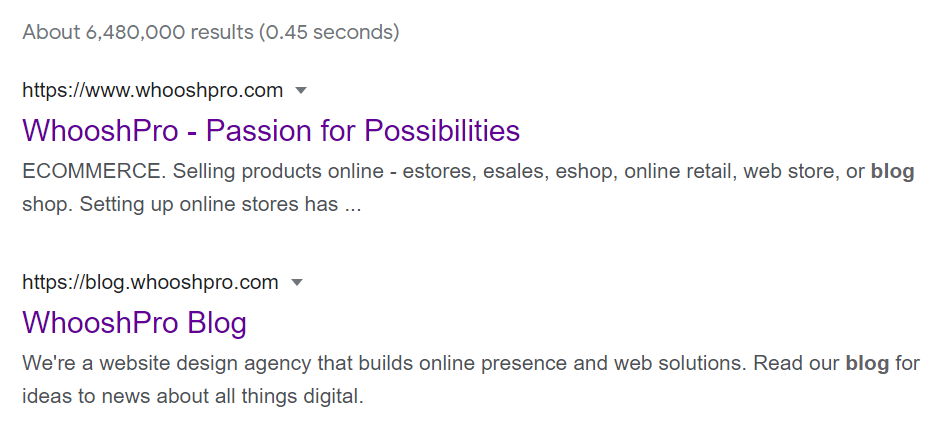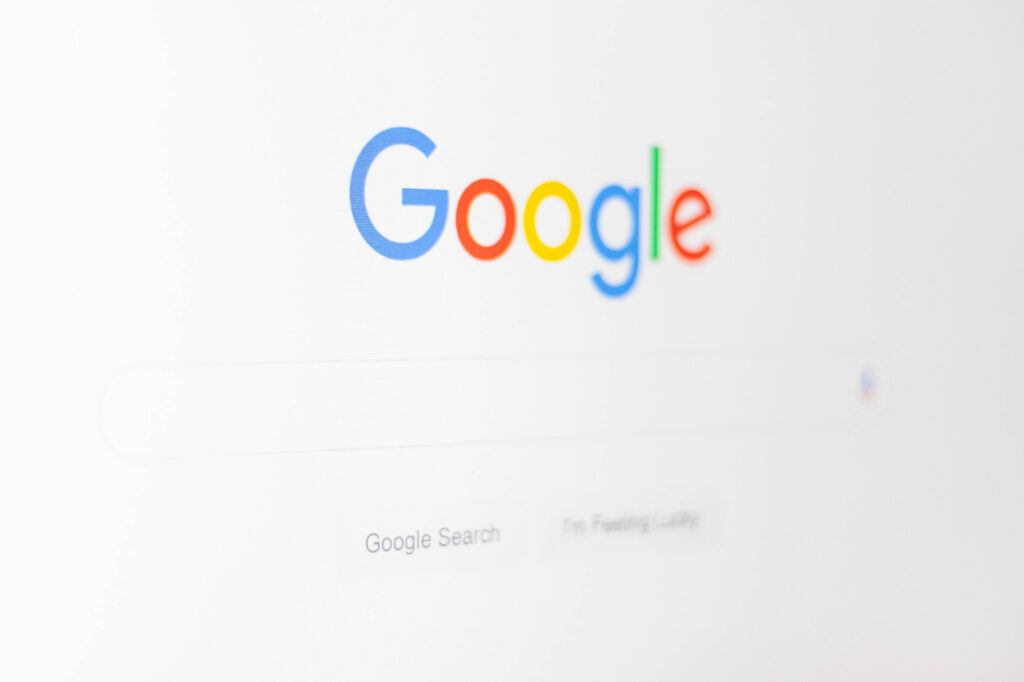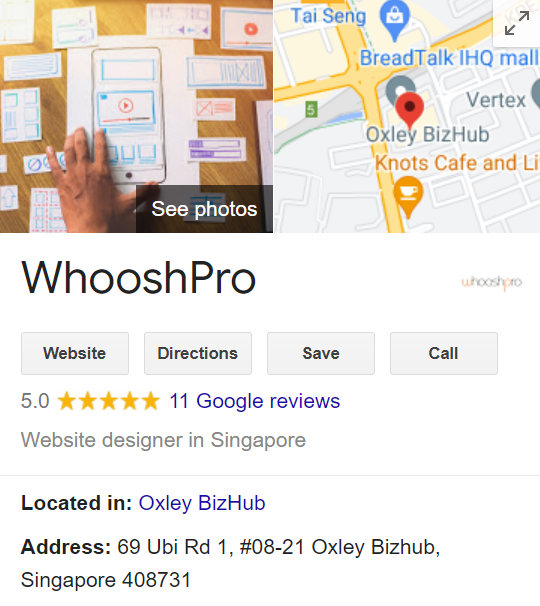SEO and digital marketing is a fast-paced and ever-changing field. That’s why it’s important for you to stay updated on the latest SEO updates and strategies to dominate your competitors in SEO rankings.
With over 3.5 billion searches per day just on Google alone, having a higher ranking on search results can no doubt help you improve on your website traffic and brand visibility.
This guide to SEO will get you started on your SEO journey and explain everything you need to know about today’s SEO components.
Ready? Let’s dive right in.
How To Optimize Your Site For SEO
There are the points that we will be covering in this SEO guide:
- Research On Keywords That People Search For
- Publish Relevant, Quality Content And Keep Them Fresh
- Use Descriptive URLs and Page Titles
- Optimize Your Heading Tags and Meta Descriptions
- Leverage On Internal and External Links
- Get Back Links From Websites With High Domain Trust and Authority
- Use Relevant File Names and Alt Text For Images
- Make Sure Your Site Is Fast, Secure, and Responsive
- Build On Your Business’s Authenticity and Local SEO
- Register Your Site and Submit to Google Search Console For Indexing
1. Research On Keywords That People Search For
The first step in SEO is keyword research.
You’ll want to know what keywords people are searching for with regards to your selected topic before you even start writing. This way, you’ll be able to include your targeted keywords into part of your content.
You can use keyword research tools to identify your focus keywords or key phrases. Try to repeat the keywords at least 3 times throughout your content. Avoid keyword stuffing which can kill your SEO as today’s use of keywords is much more about semantics.
Just focus on presenting your keywords in a natural manner to readers and in strategically important areas like the URL and headlines (which we’ll touch on later).
2. Publish Relevant, Quality Content And Keep Them Fresh
Creating content is one thing. But what’s more important for landing on that first page is the relevance, freshness, and quality of your content.
Relevance – You should publish content that directly addresses your keywords’ search intent. If you have, let’s say, a page about cats, you’ll never rank for search queries related to dogs, no matter how informative your content might be. So you’ll have to make sure that your content is aligned with the search queries that you wish to rank high for.
Freshness – Posting new content is one way to boost your SEO. But, if you are already have published some valuable content, then you might want to keep them up to date by adding any new, relevant information. This helps boost your SEO as well.
Quality – And if your content is more informative than other competitors’, you’ll naturally get more attention from people, which the search engine will eventually pick up on. So even if you don’t post often, you can still get great results so as long as your content is informative, thorough and in-depth.
3. Use Descriptive URLs and Page Titles
Once you’ve taken care of the content, you’ll need to focus on your URL and page title.
URL – Your URL should be user-friendly and reflect your content topic. Try to keep it short and simple and make sure to include your keywords in the URL itself, preferably at the very start of the sentence. Be sure to separate each word with a hyphen as Google views hyphens in URLs as word separators.
POOR URL
USER-FRIENDLY URL
Page title – Likewise, your page title should also reflect your content topic, with the keywords at the very start of the title as well. It’s best to keep it the same as your page URL.
4. Optimize Your Heading Tags and Meta Descriptions
Next up, you’ll have to make some slight HTML adjustments. And no, you won’t need to have in-depth knowledge of coding in order to do this.
Let’s look at the two parts of HTML that you’ll have to optimize for your content.
Heading tags – Heading tags define the headings of a page and how it is organised. These tags are defined by <Hn> , with “n” representing a number between 1 and 6, with 1 having the highest hierarchical order. Each page should only have one H1 tag, which is usually the page title itself.
Meta descriptions – Meta descriptions are what show up as an excerpt on search results. Don’t overthink about the meta descriptions. Just stick to the search intent and summarize your content in less than 160 characters with some keywords sprinkled in here and there for that sweet SEO boost.

WPBLOG META DESCRIPTION
5. Leverage On Internal and External Links
A heavy component of Google’s ranking algorithm was developed on the notion of PageRank. In simple terms, it’s a system that determines how important a page is based on scoring the links it receives.
That means pages that receive a higher number of valuable links directing to them will have a higher PageRank score. And those with a higher score will rank higher in the search results than those with a lower score.
Keep in mind that when a page links to another page, it passes on a portion of its PageRank to the page it links to. This means that the quality of a link is just as important as the number of links your page receive. This counts for both internal as well as external links.
Internal links – If possible, you should try to link to any related or continuation of curated content within your website. This establishes a hierarchy on your site, giving Google an insight into the structure of your site.
External links – Try to reference the sources used in your content by linking to high-quality external sources. Stick to sites with high ranking truthful content as your sources. This helps to give your content authenticity and credibility and strengthen the topic signal to Google.
6. Get Back Links From Websites With High Domain Trust and Authority
A backlink is a link that’s created when another website links to yours. Backlinks are especially important for SEO because they signal to search engines that others find your website credible and valuable.
Obtaining these links by outreaching to other relevant websites is a process known as link building. Not only does link building help you build relationships with key industry players, it also establishs you as an authority in your niche and direct referral traffic to your website.
Keep in mind that certain backlinks are more valuable than others. When building links, look for pages with high page authority and relevant content.
7. Use Relevant File Names and Alt Text For Images
An alternative (alt) text is the written text that appears in place of an image that fails to load. It primarily gives context for those with visual and cognitive disabilities.
But did you know that alt text can be read by search engines to determine the content of a page? Alt text offers you another opportunity to repeat your target keywords within your content.
It’s best to use an alt text that both describes the image and includes the keywords that you’re targeting. This concept applies to the naming conventions of the rest of your digital assets as well.

ALT TEXT EXAMPLE
Average alt text: <𝚒𝚖𝚐 𝚜𝚛𝚌=”𝚐𝚘𝚘𝚐𝚕𝚎.𝚓𝚙𝚐” 𝚊𝚕𝚝=”𝙶𝚘𝚘𝚐𝚕𝚎”>
Better alt text: <𝚒𝚖𝚐 𝚜𝚛𝚌=”𝚜𝚎𝚘.𝚓𝚙𝚐” 𝚊𝚕𝚝=”𝚂𝙴𝙾”>
Best alt text: <𝚒𝚖𝚐 𝚜𝚛𝚌=”𝚐𝚘𝚘𝚐𝚕𝚎-𝚜𝚎𝚘.𝚓𝚙𝚐” 𝚊𝚕𝚝=”𝙶𝚘𝚘𝚐𝚕𝚎 𝚂𝙴𝙾”>
8. Make Sure Your Site Is Fast, Secure, and Responsive
Google has made some drastic changes to its search ranking algorithm lately, namely the importance of users having the best possible experience on your site.
A key factor is increasing your page speed. This comes as no surprise that high-performing sites tend to engage and retain users better than low-performing ones. BBC for example, determined that every additional second of loading time equates to a 10% loss of its users.
In addition to page speed, Google also announced that the use of secure, encrypted connections would be considered as one of their ranking signals. That means your website not only needs to load fast, it also needs to be secured with a HTTPs connection.
And with more users shifting away from desktop usage, your website should be designed to adapt to different devices and screen sizes. Couple this with a fast loading and secure site, you can reduce the bounce rate of your website and cater to as many visitors as possible. Subsequently, search engines will eventually pick up on the increased traffic to your website.
If you’re unfamiliar with designing websites for speed and responsiveness, do get in touch with a professional web design agency for further assistance.
9. Build On Your Business’s Authenticity and Local SEO
It’s no surprise that authenticity play a huge role in ranking higher on search results, especially the local ones. They help you gain customers’ trust and build on your business’s credibility and reputation. This gives substance to your business, services and products and encourages visitors to your site.
And if you own a brick and mortar business with a physical location, improving on your local SEO can get you organic traffic from searches performed by customers in nearby areas.

WHOOSHPRO LOCAL SEO
You can establish your brand’s trustworthiness by encouraging customers to leave online reviews, delivering exceptional services to your customers, and implementing data privacy and protection policies.
10. Register Your Site and Submit to Google Search Console For Indexing
Having established the fundamental SEO practices, it’s now time to get your website on Google if it isn’t already.
Before you do that however, make sure to check your site for any broken links or outdated content.
Once you’re done, head over to Google Search Console and sign in with your Google account. Register your site by entering your website’s URL and submit it for verification by Google.
Get Started On Your SEO Learning Journey!
Remember, SEO isn’t really a complicated subject. It’s ultimately all about optimizing your site and content with user behavior. Don’t worry too much about it and just focus on answering your users’ needs.
We hope that this SEO guide has helped you learn more about SEO and present you with some ideas for your own SEO strategy.
And if you’re looking for SEO services, do not hesitate to contact us for further assistance!





